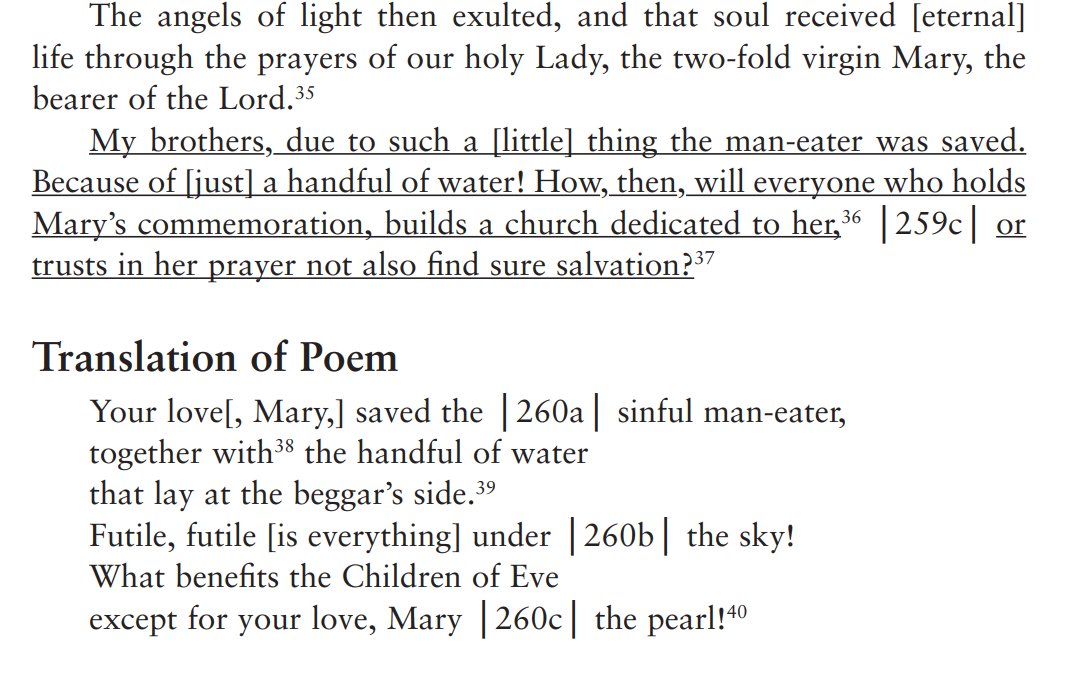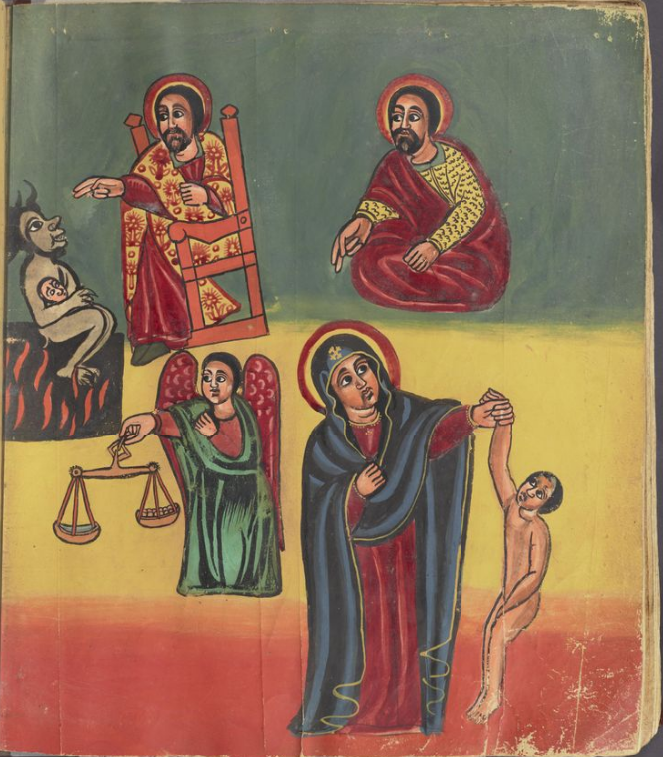For our last week, my Global Medieval Lit class is reading the 15th-century Ethiopian story of the Virgin Mary, The Cannibal of Qəmər, in which a rich cannibal eats 78 people but does one (1) good deed, so the Virgin Mary persuades Jesus to let him into heaven. #MedievalTwitter
In the story, the cannibal (a wealthy man) eats his family and servants, then goes looking for more victims. A beggar asks him for a sip of water in Mary's name, and he reluctantly grants it (but just one sip!).
Unable to find victims and refusing to eat bread, the cannibal starves to death in a cave.
Dragged before Jesus by devils, the cannibal's soul is immediately sentenced to Hell, but Mary intervenes.
Dragged before Jesus by devils, the cannibal's soul is immediately sentenced to Hell, but Mary intervenes.
Mary says that the cannibal gave a beggar a sip of water once, so he's not all bad, and--she argues--should have his sins forgiven. Jesus orders an angel to measure the sip of water against the 78 people the cannibal ate. The water outweighs them. The cannibal goes to heaven.
This story is WILDLY popular and appears in numerous versions of the Täˀammərä Maryam [The Miracles of Mary], which were Ge'ez collections of Marian miracle stories mostly written by Ethiopian authors. Many of them are BEAUTIFULLY illustrated.
The story has been read through a racist light in the past, with white scholars arguing that the cannibalism in the story is bc the story is African, which is *simply not true.* The story represents cannibalism as the worst possible sin, and as a sort of limit case for grace.
The story ends with a moral about the incredible power of Mary as intercessor and her prayer as the source of "sure salvation."
The story presents a kind of thought experiment about whether even the worst possible sins could be forgiven. Wendy Laura Belcher has also argued that narratives often represented the wealthy as metaphorical cannibals, and this is possibly a critique of them.
My class is examining the story both on its own merits and in light of some examples of its artwork in Ethiopian manuscripts. We are considering what elements of the story are deemed important enough to depict in art and how they are depicted.
The story itself has been translated here by Michael Kleiner & Wendy Laura Belcher: https://muse.jhu.edu/article/729810/summary
That same issue has an article by Belcher that is the source of much of this information and her argument above about the wealthy as metaphorical cannibals.
That same issue has an article by Belcher that is the source of much of this information and her argument above about the wealthy as metaphorical cannibals.
The artwork above is from, respectively:
1) Princeton Ethiopic Manuscript No. 57. f. 143v
2-4) An Art Institute of Chicago manuscript here: http://aic.onlineculture.co.uk/ttp/ttp.html?id=a25ab0c8-060e-4061-9015-173ac8e4c6ab&type=book
5) Princeton Ethiopic Manuscript No. 65 - page 187 (here: https://dpul.princeton.edu/msstreasures/catalog/12579w78f )
1) Princeton Ethiopic Manuscript No. 57. f. 143v
2-4) An Art Institute of Chicago manuscript here: http://aic.onlineculture.co.uk/ttp/ttp.html?id=a25ab0c8-060e-4061-9015-173ac8e4c6ab&type=book
5) Princeton Ethiopic Manuscript No. 65 - page 187 (here: https://dpul.princeton.edu/msstreasures/catalog/12579w78f )
This classhas been an enormous amount of work for me to prepare adequately for each week's texts, but the discussions have been incredible, and we've read amazing texts from throughout the medieval world, while critiquing the Euro-centric idea that "medieval" is the best word.

 Read on Twitter
Read on Twitter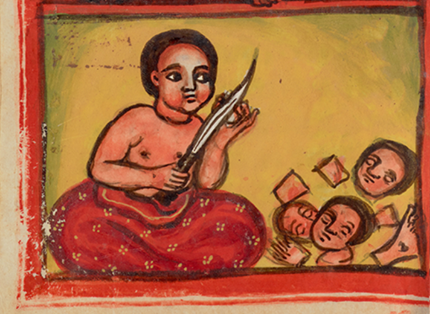
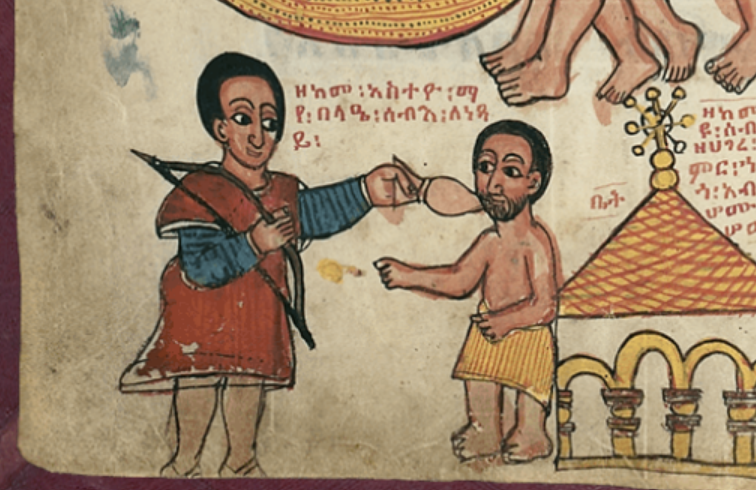
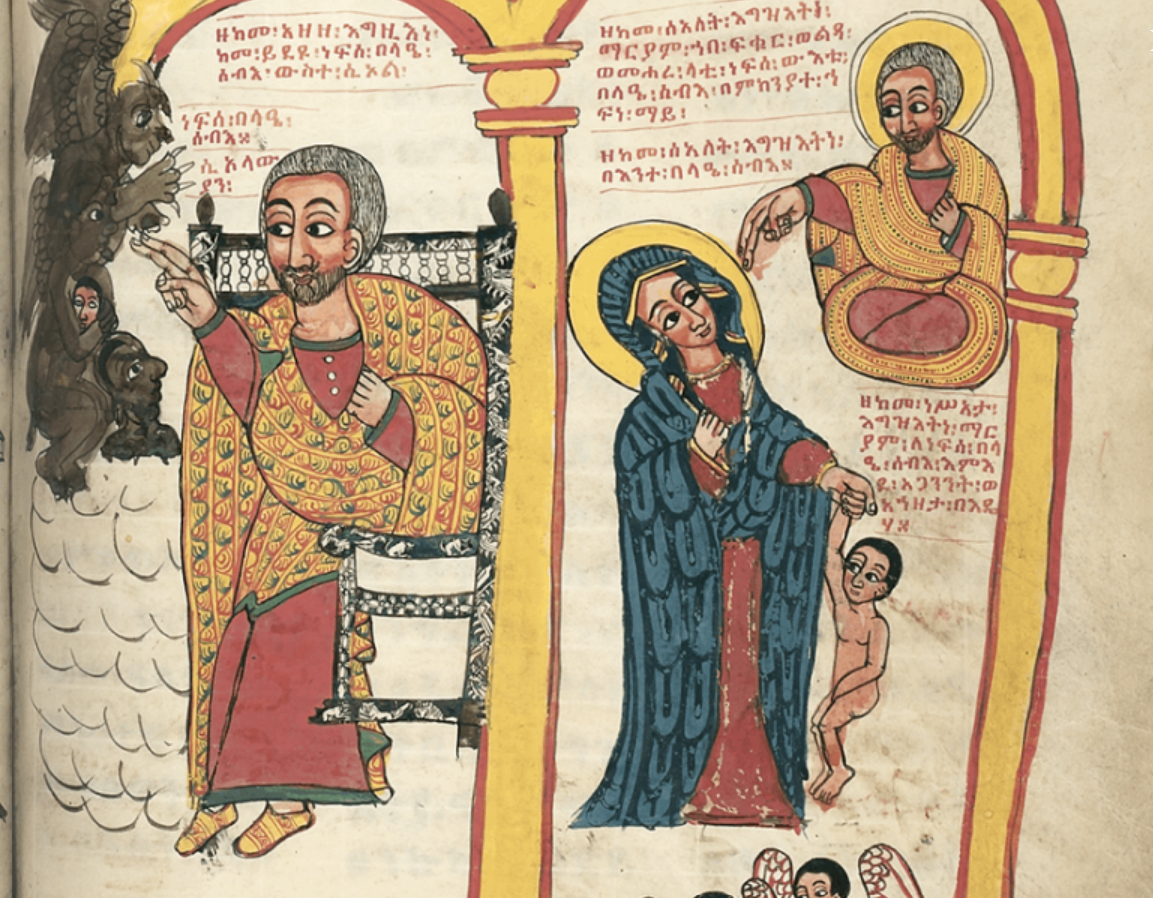

![This story is WILDLY popular and appears in numerous versions of the Täˀammərä Maryam [The Miracles of Mary], which were Ge'ez collections of Marian miracle stories mostly written by Ethiopian authors. Many of them are BEAUTIFULLY illustrated. This story is WILDLY popular and appears in numerous versions of the Täˀammərä Maryam [The Miracles of Mary], which were Ge'ez collections of Marian miracle stories mostly written by Ethiopian authors. Many of them are BEAUTIFULLY illustrated.](https://pbs.twimg.com/media/Eco-0wUXsAA3zfs.png)
